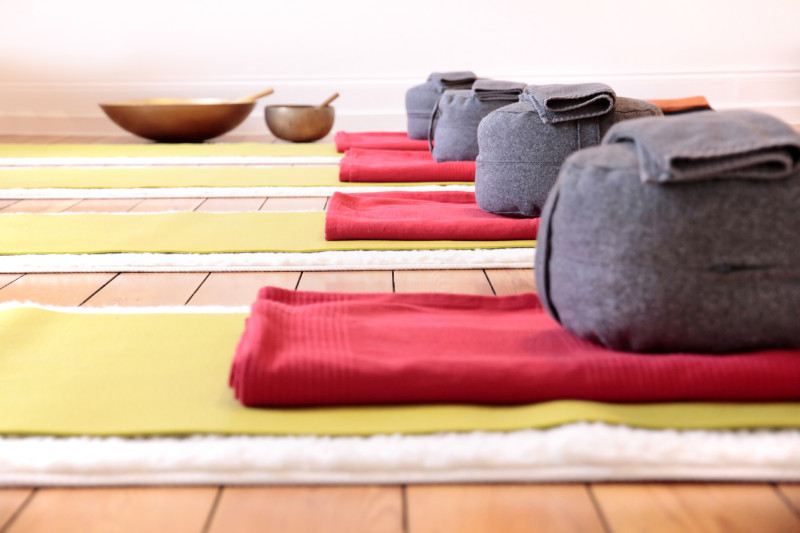
One of the most practical and useful meditation accessories is something comfortable to sit on. There are various types of chairs, benches, and cushions made for meditation. More comfortable than sitting on the floor and designed to allow sitting for long periods of time without stiffness or pain, these different types of seats are especially good for those who have neck or back problems, or limited flexibility. For those just beginning the practice of meditation, a meditation cushion can be an effective way of enhancing focus and concentration by eliminating the discomfort that may come from sitting still for long periods of time.
The most common meditation sitting device is a cushion. Also called a Zafu, mediation cushions are either round or half-moon shaped and are typically filled with buckwheat hulls, kapok, or cotton. Each of these fillings has different attributes, and different people find success with different types. Buckwheat hulls are the firmest of the three fillings and have the benefit of conforming to your body without collapsing too much under your weight, however some people find buckwheat filled meditation cushions too firm to be comfortable for long periods of sitting. Kapok is another type of filling commonly used in meditation cushions and is made from the fluffy material obtained from seed pods on a tropical tree called the kapok tree. This fibrous material is softer than buckwheat hulls but still firm enough to provide support. At the softest end of the spectrum is the cotton filling, which is sometimes criticized for not being firm enough to provide comfortable support for meditators. Each person should experiment with different types of cushions to see what works for them. Here at Practical Meditation, we use buckwheat filled zafus, and that’s usually what we recommend for beginners looking for their first meditation cushion. A secondary type of meditation cushion is called a zabuton. This is a thin square or rectangular cushion that is typically around 20-30 inches per side and is designed to go under the zafu and provide cushion for the knees and ankles. Although not absolutely necessary, a zabuton is a nice accessory to have especially if the room where you will be meditating has wood or tile floors rather than carpet.
Meditation cushions have several advantages over sitting on the floor or in a normal four-legged chair you may already have in your home. Meditation requires mental focus and clarity and physical discomfort or joint pain can become an all-encompassing annoyance after several minutes and can impact the ability of a meditator to focus on their objectives. Regardless the type of seat, chair, or cushion, sitting still in any single position for a long time will inevitably cause some muscle cramping or stress on limbs and joints. Meditation cushions are designed to alleviate these problems as much as possible to allow for the best possible meditation experience. Meditation cushions also allow you to sit in a slightly forward angle, which prevents slouching and slumped shoulders which can lead to pain and discomfort over a long period of time. This tilt also enables the spine to be aligned as straight as possible without feeling as if you have to strain to hold it in that position.
Each person’s body and preferences are different, and there is no right or wrong answer when it comes to meditation cushions. When shopping for a new zafu, take the information in this article into consideration as well as your personal preferences, body type, injury history etc.